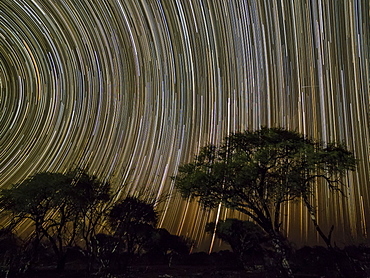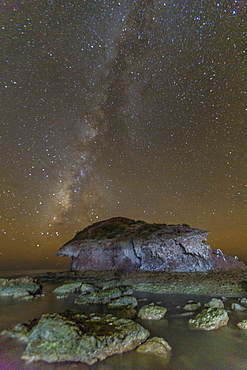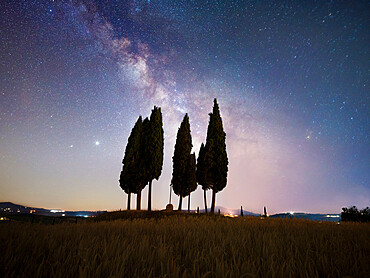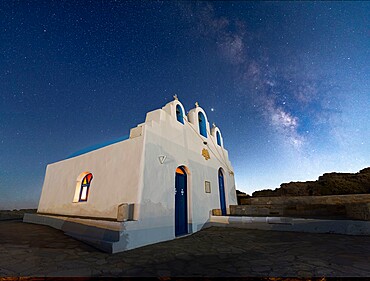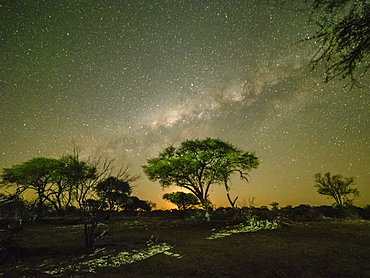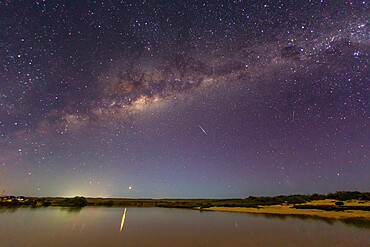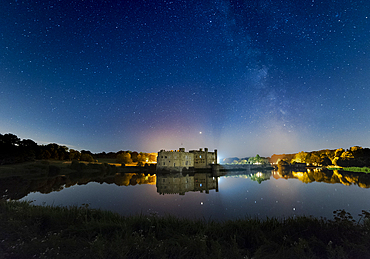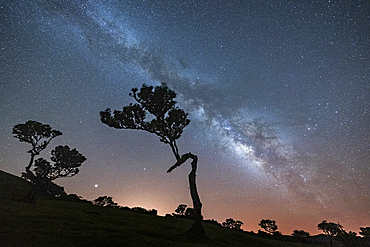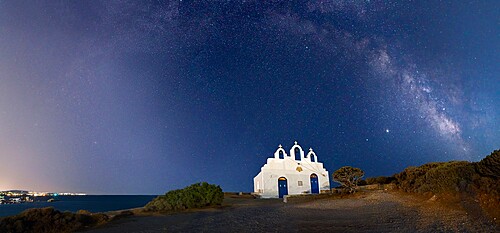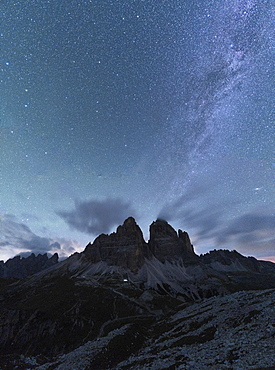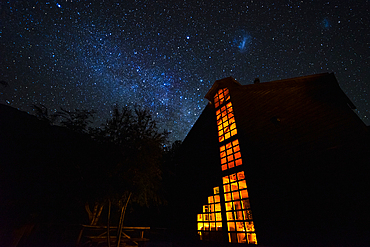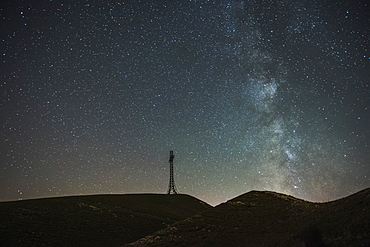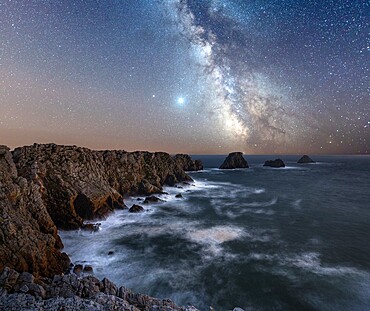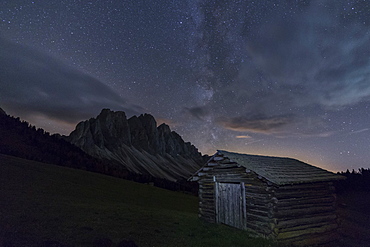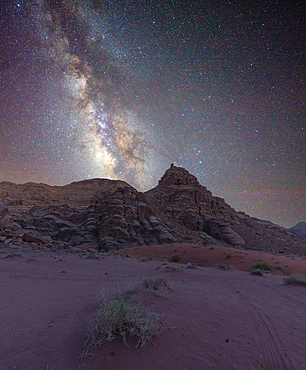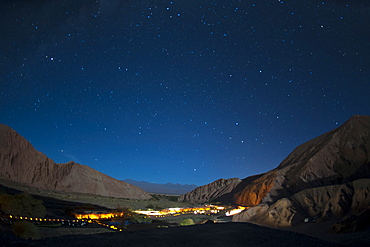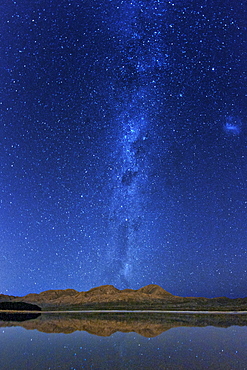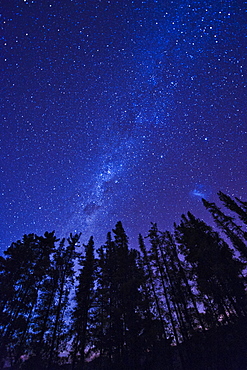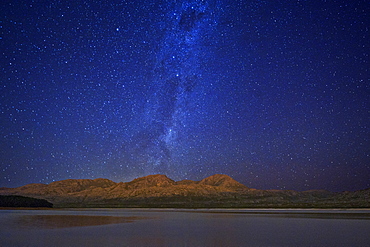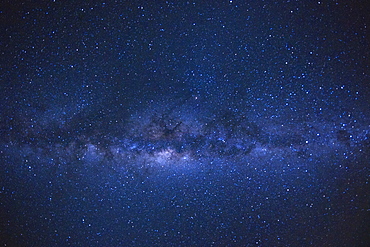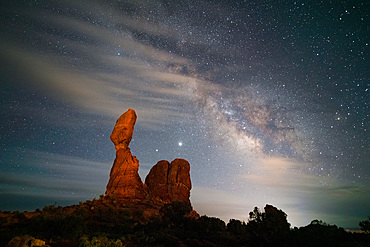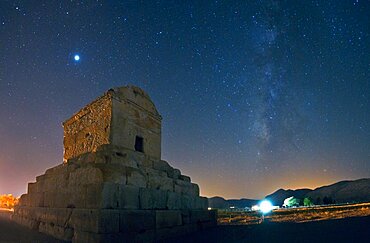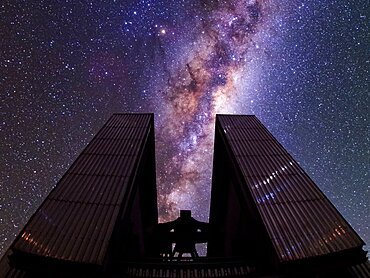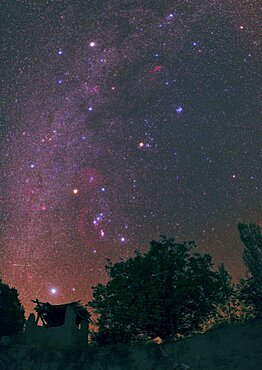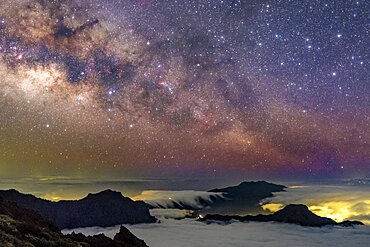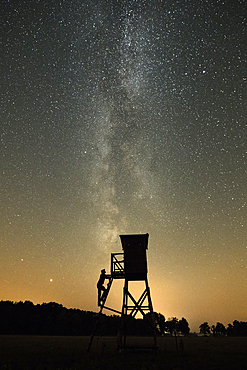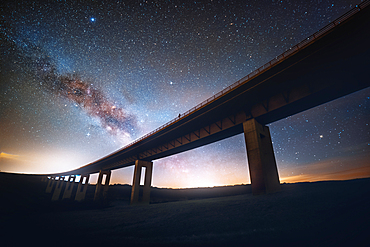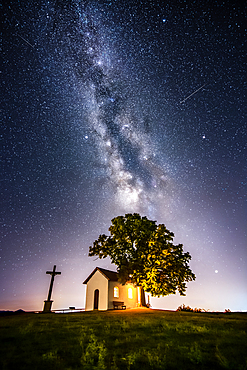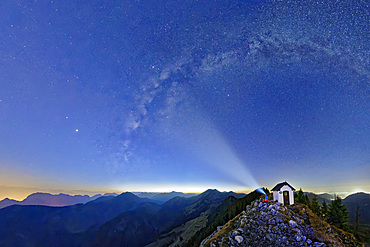Results
« Previous 1 2
123 results found
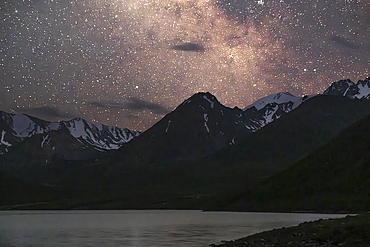
Night sky and Milky Way over Kol-Ukok lake landscape showcasing stars and serenity, Kyrgyzstan, Central Asia, Asia

Milky Way above Delicate Arch, Arches National Park, Moab, Grand County, Utah, United States of America, North America
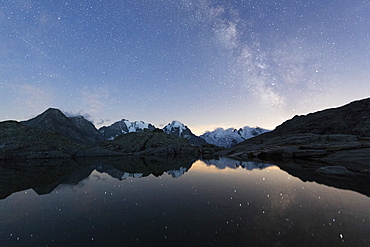
Milky Way on Piz Bernina, Fuorcla Surlej, Corvatsch, Engadine, Canton of Graubunden, Swiss Alps, Switzerland, Europe
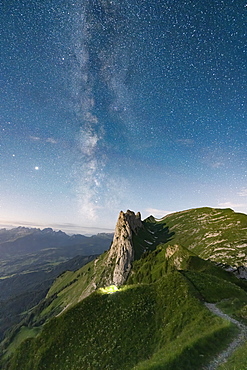
Milky Way in the starry sky over Saxer Lucke mountain, aerial view, Appenzell Canton, Alpstein Range, Switzerland, Europe
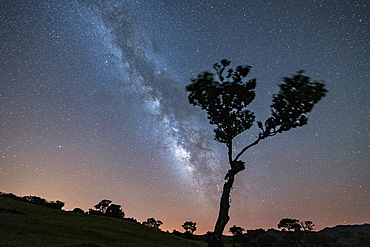
Lone tree under the bright Milky Way at night, forest of Fanal, Madeira island, Portugal, Atlantic, Europe
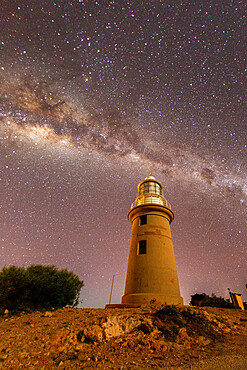
The Milky Way at night at the Vlamingh Head Lighthouse, Exmouth, Western Australia, Australia, Pacific

The Milky Way over termite mounds in Cape Range National Park, Exmouth, Western Australia, Australia, Pacific
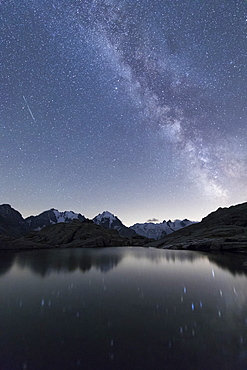
Milky Way on Piz Bernina, Fuorcla Surlej, Corvatsch, Engadine, Canton of Graubunden, Swiss Alps, Switzerland, Europe
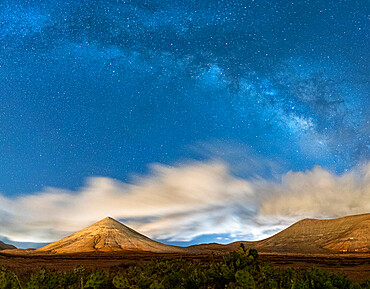
Milky Way in the night sky over Montana del Fronton mountain, La Oliva, Fuerteventura, Canary Islands, Spain, Atlantic, Europe
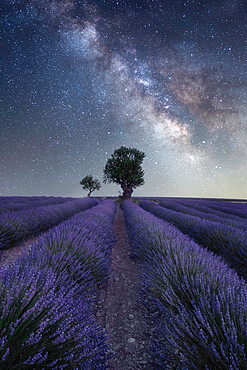
Milky way above a lavender field and two small trees on the Plateau de Valensole, Provence, France, Europe

An autumn view of the Milky Way over the Atlantic Ocean, seen from the cliffs of Land's End, the most southwesterly point of Great Britain, Cornwall, England, United Kingdom, Europe
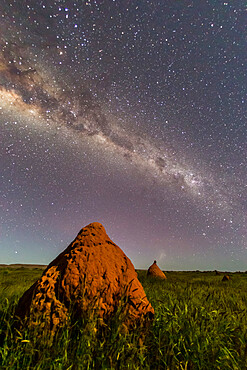
The Milky Way over termite mounds in Cape Range National Park, Exmouth, Western Australia, Australia, Pacific
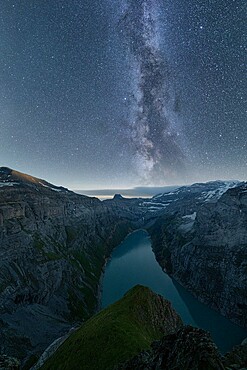
Milky Way in the starry night sky over lake Limmernsee, aerial view, Canton of Glarus, Switzerland, Europe

Milky Way and Jupiter beyond a majestic sea stack at Ladram Bay, Sidmouth, Devon, England, United Kingdom, Europe
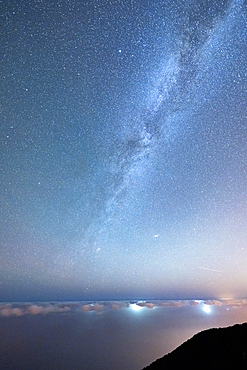
Bright stars of Milky Way in the night sky over the Laurissilva Forest of Fanal, Madeira island, Portugal, Atlantic, Europe

The Milky Way reflecting in Lake Federa, with the Becco di Mezzodi, in the background. Dolomites, South Tyrol, Italy, Europe
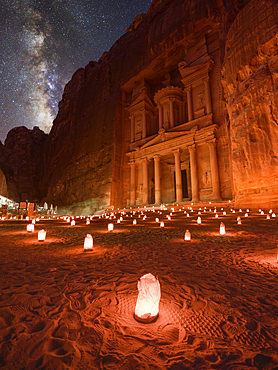
Petra Treasury (El Khazneh) by night illuminated by small lanterns and the Milky Way in the sky, Petra, UNESCO World Heritage Site, Jordan, Middle East
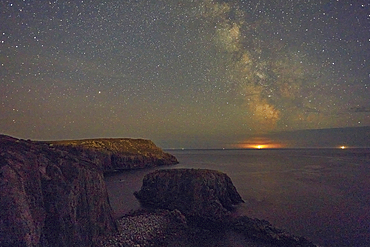
An autumn view of the Milky Way over the Atlantic Ocean, seen from the cliffs of Land's End, the most southwesterly point of Great Britain, Cornwall, England, United Kingdom, Europe
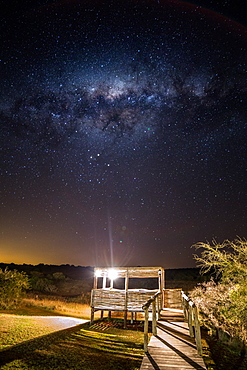
The Milky Way over a viewing platform at the Hlosi Game Lodge in the Amakhala Game Reserve in the Eastern Cape, South Africa, Africa
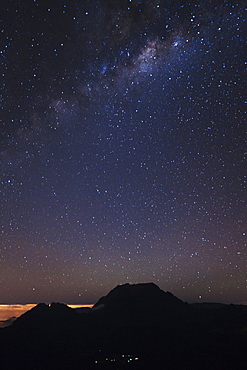
The Milky Way over the mountains encircling the Cirque de Mafate caldera on the French island of Reunion in the Indian Ocean, Africa
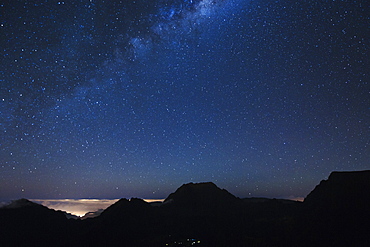
The Milky Way over the mountains encircling the Cirque de Mafate caldera on the French island of Reunion in the Indian Ocean, Africa
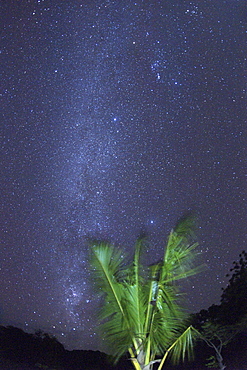
Milky way stars seen from Mogundula island in the Quirimbas archipelago in northern Mozambique, Africa
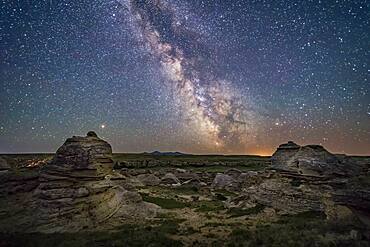
Mars (at left) and the galactic centre area of the summer Milky Way low over the southern horizon at Writing-on-Stone Provincial Park, Alberta, on June 8/9, 2018. Sagittarus is at centre, with Scorpius at right. The Messier 6 and 7 open star clusters are just above the horizon at centre, just right of the Sweetgrass Hills on the horizon in Montana.
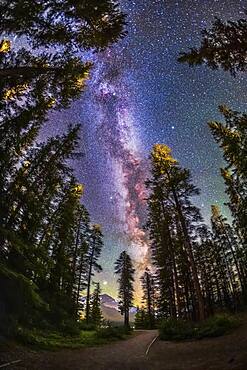
The summer Milky Way with the Summer Triangle stars through pine trees, shot from the Howse Pass Viewpoint at Saskatchewan River Crossing, Banff National Park, Alberta. Jupiter is the bright object at the bottom.

A horizon-to-zenith panorama of the winter consellations on a March evening as they set into the southwest. Orion is at bottom centre, with his Belt pointing down to Canis Major and up to Taurus. Gemini and Auriga are at top, in this case near the zenith overhead. The bright star clusters, M44, the Beehive, (at left) and M45, the Pleiades, (at right) flank the Milky Way. M45 is embedded in the Zodiacal Light. The star clusters M35 in Gemini and M41 in Canis Major are also visible as diffuse spots, as are several other star clusters. A couple of satellite trails are visible.

The Milky Way arching over Emerald Lake and Emerald Lake Lodge in Yoho National Park, BC. This was on June 6, 2016 and despite it being about 1:30 am, the sky, especially to the north at left, is still lit by blue twilight from the short solstice night.

The centre of the galaxy area of the Milky Way toward Sagittarius and Scorpius, with the Sagittarius Starcloud right of centre, and the Lagoon Nebula (M8) left of centre. The Cat's Paw Nebula (NGC 6334) in Scorpius is at upper right, the Swan Nebula (M17) and Eagle Nebula (M16) are at lower left. To the right of them is the Small Sagittarius Starcloud (M24). At the very top is the Snake Nebula (B72). The main mass of dark nebula is the Pipe Nebula (B78). Above M24 at left is the open cluster M23 while below the M24 star cloud is the cluster M25. The globular M22 is at the bottom edge. At right of frame are the open clusters M6 (in the dark area of the Milky Way) and M7 (in the bright starcloud).

All of Scorpius, plus parts of Lupus and Ara regions of the southern Milky Way. This area was directly overhead when I took this at about 4:30 am local time on April 6, 2014 from near Coonabarabran, Australia. The head of Scorpius is at top his tail at bottom though you could turn this image any direction and it would be correct as seen in the sky at this latitude, depending on the time of night. But in portrait mode like this north is at top. Along the Milky Way are numerous nebulas, including the False Comet area, the Cat's Paw area, and the colourful nebulas around Antares at top. The dark Pipe Nebula is at left of frame.

A mosaic of the region around the centre of the Milky Way in Sagittarius and Scorpius. The field takes in the Milky Way from the Cat's Paw Nebula at bottom edge to the Eagle Nebula at top left. In between from top to bottom are the Swan Nebula (M17), the Small Sagittarius Starcloud (M24), the Trifid and Lagoon Nebulas (M20 and M8) and the open clusters M6 and M7. The prominent dark nebula at right is the large Pipe Nebula (B78) with the small Snake Nebula (B72) above it. The whole complex is visible to the naked eye as the Dark Horse.

The spectacular field of Messier 8 and 20 emission and reflection nebulas in Sagittarius, with M8, aka the Lagoon Nebula below, and M20, the Trifid Nebula, above, all set in the rich starfields of the Milky Way. The diffuse nebula left of M8 is NGC 6559. Two globular clusters, NGC 6544 and NGC 6553, sit below and to the left (east) of M8. The Messier open cluster, M21, sits above M20.

A mosaic of the region around the Small Sagittarius Starcloud and Dark Horse dark nebula complex. The field takes in the Milky Way from the Lagoon Nebula at bottom to the Eagle Nebula at top left. In between from top to bottom are the Swan Nebula (M17), and the Small Sagittarius Starcloud (M24). Flanking the bright M24 starcloud are the large open clusters M23 (right) and M25 (left). At bottom left is the M22 globular star cluster. The prominent dark nebula at right is the large Pipe Nebula (B78) with the small Snake Nebula (B72) above it. The whole complex is visible to the naked eye as the Dark Horse.

A flower-filled meadow at the Hay Barn Road at Waterton Lakes National Park, Alberta, with the summer Milky Way and Mars to the south over Waterton Valley and Vimy Peak at left.
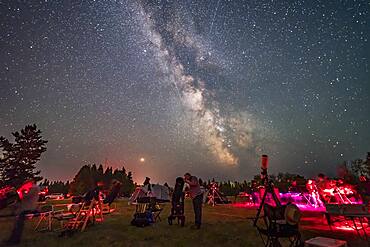
An observer gazes skyward with his Dobsonian reflector telescope at the Saskatchewan Summer Star Party on August 9, 2018, in the Cypress Hills of southwest Saskatchewan, at the Cypress Hills Interprovincial Park, a Dark Sky Preserve. The Milky Way shines to the south. Smoke in the sky obscures the horizon somewhat.

Mark gazing at a target, M22, in the Milky Way with his TeleVue 127 refractor at the annual Rothney Observatory Milky Way Nights for July 25, 2019. Several satellite trails mark the sky. Jupiter (brightest at right) and Saturn (at left) flank the Milky Way.
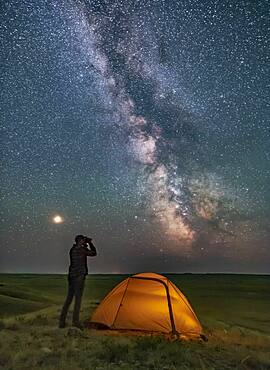
A Park interpreter poses for a scene in Grasslands National Park, Saskatchewan, of stargazing with binoculars under the Milky Way on a dark moonless night. Grasslands is perfect for stargazing as it is a Dark Sky Preserve and the horizon is vast and unobstructed.
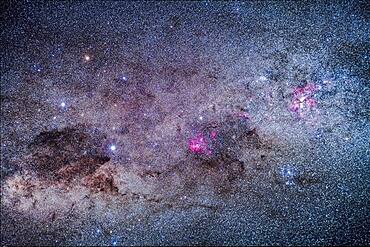
The amazing area of the southern Milky Way in Carina and Crux, the brightest part of the Milky Way after the galactic core region. At right is the Carina Nebula, with the Southern Pleiades cluster, IC 2602, below it. The Football Cluster, NGC 3532, is at upper left of the Carina Nebula. At centre is the region of Lambda Centauri, with the star cluster NGC 3766, the Pearl Cluster, above the emission nebulosity. At left is the Southern Cross, with the dark Coal Sack at bottom left of the Cross, with thin tendrils extending to the right. To the left of Alpha Cruxis at the bottom of the Cross is the star cluster NGC 4609; aboive Alpha is NGC 4649. To the left of Beta Cruxis at the left side of the Cross is the Jewel Box Cluster, NGC 4755.
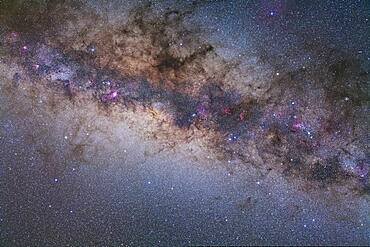
Sagittarius and Scorpius in diagonal framing, with Milky Way from Ara to Serpens. Taken with 50mm Sigma lens at f/4 and Canon 5D MkII at ISO 800 for stack of just 2 frames each at 6 minutes. Cloud prevented more exposures. Taken from Atacama Lodge, San Pedro de Atacama, Chile.

The Celestron GPS8 scope looking at M22 in the Milky Way in the light of the rising waxing gibbous Moon, from the backyard July 21, 2019. Jupiter is bright at right, Saturn at left.
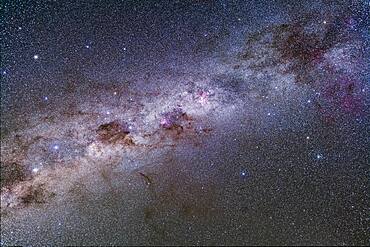
Splendours of the southern Milky Way from Vela (at top right) to Centaurus (at bottom left), including the Carina Nebula, Crux and Coal Sack, and Alpha and Beta Centauri. A part of the huge Gum Nebula is at far right. The False Cross is at right, with the large cluster NGC 2516, the Diamond Cluster, below it. The globular cluster Omega Centauri is at upper left.

The summer Milky Way overhead and through the Summer Triangle stars in July, looking up through trees in Banff National Park at Herbert Lake. Deneb is at top left, Vega at top right, and Altair is at bottom. The bright Cygnus star cloud is obvious. As are the dark lanes in the Milky Way, including the Funnel Nebula at top, aka Le Gentil 3.

Mars (at left in clouds) and the summer Milky Way over Lake Herbert and reflected in the still waters this night. This is in Banff National Park, Alberta. I shot this July 17, 2018 on a night that gradually clouded up, after a run of two very good nights previous to this.
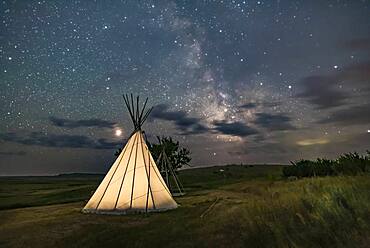
Mars (at left) and the Milky Way (at right) over a single tipi (with another under construction at back) at the Two Trees site at Grasslands National Park, Saskatchewan, August 6, 2018. I placed a low-level warm LED light inside the tipi for the illumination.
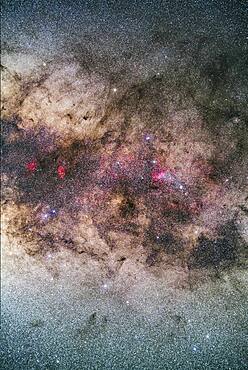
The tail of Scorpius, photographed with it high in the sky from Australia. The frame is oriented with the Milky Way running horizontally and the hook of the tail vertically.
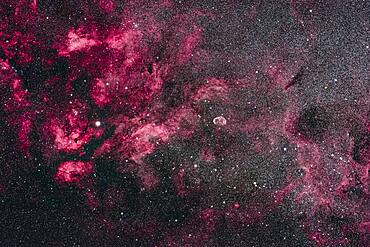
This is the central area of Cygnus and its bright Milky Way starcloud surrounded by red nebulosity. At left is the star Sadr (gamma Cygni) with the complex of nebulosity catalogued as IC 1318. At centre is the distinct Crescent Nebula, NGC 6888, a expanding nebula created by winds from a hot Wolf-Rayet star. At bottom left is the star cluster Messier 29, though looking a little lost in the rich starfields here. At top is the cluster IC 1311, looking more obvious than M29 but not observed visually and included in the NGC catalog. Odd. At far right are the large and loose star clusters NGC 6883 and NGC 6871, the latter an obvious binocular sight. To the left of Sadr is the small cluster NGC 6910. The dark nebulas B145 and LDN 862 are at right. The small emission nebula at bottom is Sharpless 2-104.

The galactic centre region of the Milky Way in Sagittarius setting behind Bow Glacier at the end of Bow Lake, in Banff National Park, Alberta.
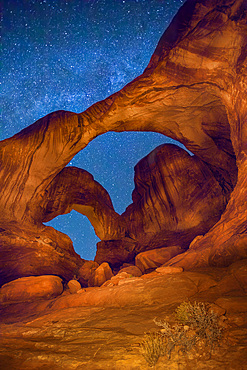
Double Arch at night with the MIlky Way & artificial light painting with a hand-held spotlight. Arches National Park, Moab, Utah.
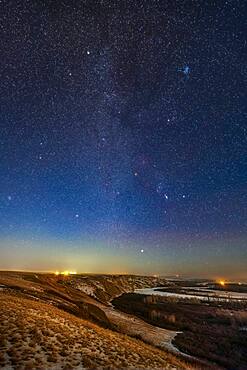
Orion and the winter stars and constellations rising in the light of a first quarter Moon on December 3, 2019. The vertical format sweeps up the Milky Way.
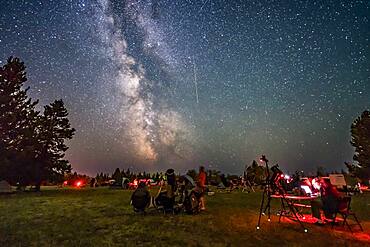
A Perseid meteor streaks down the Milky Way over the Saskatchewan Summer Star Party in the Cypress Hills of southwest Saskatchewan, at Cypress Hills Interprovincial Park, a Dark Sky Preserve. The Milky Way shines to the south. About 350 stargazers attend the SSSP every year.
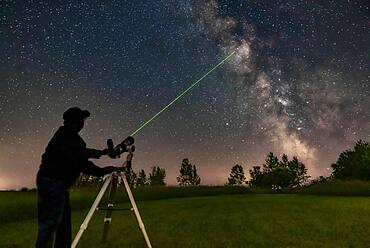
Me aiming the A&M 80mm refractor on the Astro-Tech Voyager mount at the Milky Way with its laser pointer finder showing the way. I am aiming at M11 in Scutum.
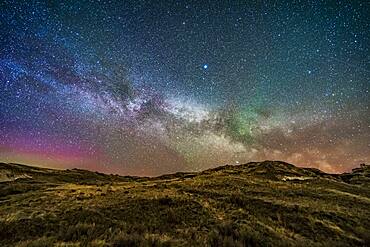
The summer Milky Way and Summer Triangle stars rising in the east at Dinosaur Provincial Park, Alberta on May 14, 2018.

A Park interpreter poses for a scene in Grasslands National Park, Saskatchewan, of stargazing with binoculars under the Milky Way on a dark moonless night. Grasslands is perfect for stargazing as it is a Dark Sky Preserve and the horizon is vast and unobstructed.
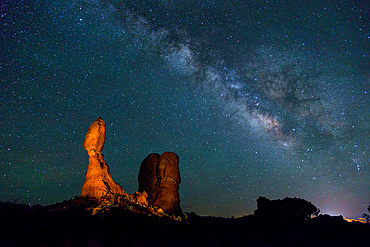
The Milky Way over Balanced Rock in Arches National Park, Moab, Utah, USA. A small spotlight was used to light paint the rock formation.
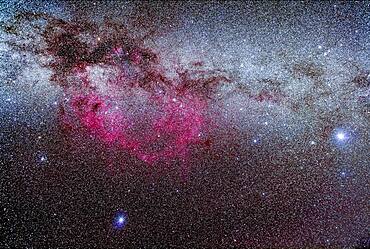
The region of the Milky Way in Puppis and Vela encompassing the vast Gum Nebula, a photographic object only. Sirius and Canis Major are at right; Canopus in Carina is at bottom. The False Cross and the open cluster NGC 2516 are at left.
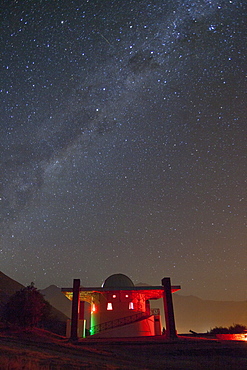
Shooting star streaks through Milky Way in clear night sky above Mamalluca Observatory, near Coquimbo, Coquimbo, Chile, South America
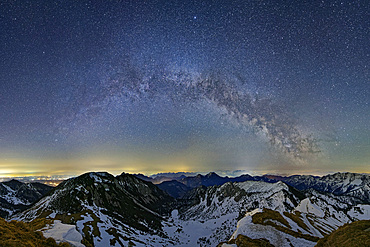
Panorama with Milky Way in the starry sky spanning the Bavarian and Chiemgau Alps, from the Rotwand, Spitzing area, Bavarian Alps, Upper Bavaria, Bavaria, Germany
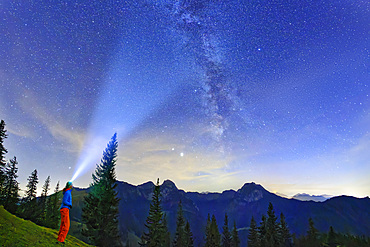
Woman stands at Farrenpoint and shines with lamp on starry sky with Milky Way, Farrenpoint, Mangfall Mountains, Bavarian Alps, Upper Bavaria, Bavaria, Germany
